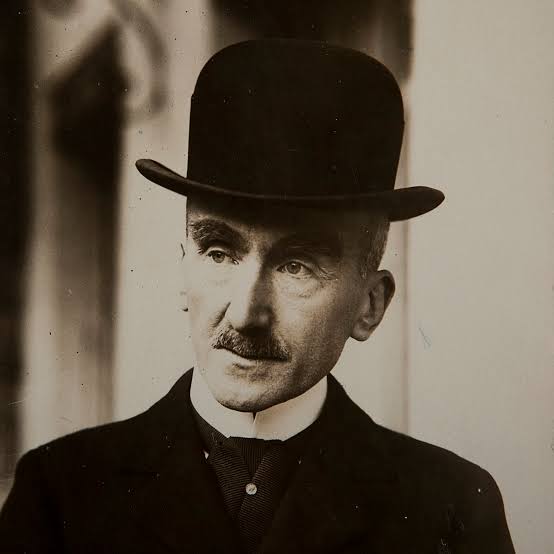· 7 min read
Why is hysteresis important for policymakers?
Why do anti-smoking policies take 20 years to work? The answer lies in a phenomenon discovered by studying twisted steel cables in 1881.

To change, to manipulate, to guide, to punish.
All policies aim to influence behavior—encouraging certain actions while discouraging others. Consider the case of smoking. In the 1990s, approximately 40% of the Dutch population smoked. By 2023, that number had dropped to just 18%. What drove this significant change?
Although the health risks of smoking have long been known, many continued the habit due to its social appeal. Smoking served as a form of social bonding—it was cozy to step outside for a cigarette with friends at a pub or take a break with like-minded colleagues to “talk shop.”
Dutch policymakers sought to reduce smoking rates to improve public health. Through awareness campaigns, altered cigarette packaging, and price increases, they implemented a series of interventions. These efforts, combined with evolving social norms and values, contributed to the gradual decline in smoking prevalence.
However, anti-smoking measures have been in place since the early 1990s, and their initial impact was limited. The Tabakswet (Tobacco Act), introduced in 1988, first targeted the public sector. In the early 2000s, more aggressive policies were introduced and actively enforced. Workplace smoking bans were expanded, allowing employees to demand smoke-free environments. Smoking in cafés was prohibited, and targeted public health campaigns intensified. Over time, these efforts began to take effect, and smoking rates steadily declined.
A key turning point may have been the court case of Nanny Nooijen, which galvanized lawmakers into action and marked a shift toward more effective legislation. Public opinion on smoking had already been shifting since the 1950s, as scientific studies increasingly linked smoking to lung cancer. Yet it took nearly five decades for anti-smoking campaigns to gain real traction—and another 20 years for these policies to show substantial results.
In this post, I want to explore the concept of hysteresis—a phenomenon rooted in magnetism but applicable to social systems and policy interventions. I will explain what hysteresis is and how it helps us understand why the effects of interventions can lag behind their introduction or even produce unintended consequences.
Hysteresis - a tale of attraction
A successful intervention, like the increased efforts in smoking bans in the early 2000s, is one that has a measurable effect on the system. Taking a bird’s-eye view, we may say that the system lagged behind the start of the intervention.
By the late 1800s, physicists were asking similar questions but about a completely different topic: magnets. In 1820, Ørsted discovered that electric current creates a magnetic field, creating a bridge between the study of electronics and magnetism. Around the middle of the century, Maxwell united the concepts of electricity and magnetism in a single theoretical framework. By the late 1800s, people were fascinated by these forces and explored how they interact in different materials.
One such individual was Sir James Alfred Ewing. He was born in Dundee, Scotland, and went to study engineering at the University of Edinburgh. Later in life he worked on naval engineering projects in Japan and helped establish the Imperial University of Tokyo. After returning to the UK, he became professor of mechanical engineering at University College Dundee and later professor of mechanism and applied mechanics at Cambridge.
Now what does this have to do with the story about smoking? I will tell you! You see, Ewing was studying how the twisting of steel cables affected the properties of the cable. He found that when you twist a steel cable, it produces a transient electric current. This current was not necessarily curious by itself since the connection between magnetism and electricity had been known for a little while. What was curious is how the rod responded when the twisting was reversed.
Hysteresis is a phenomenon in which a system response lags behind the effect of an external perturbation. This figure shows the response of a magnet to the application of a transverse magnetic field. Note how a similar increase in the strength of the external magnetic field (
You see, when Ewing put a twisting force on the rod, it did not immediately react to the force (see figure 1). Ewing noticed how increasing the twisting force produced a lagged response in the dissipation of energy through the production of a transient current, and therefore a transient magnetic field. Furthermore, he noticed that undoing this force did not produce the same effect.
He writes @[Ewing1881]:
The curves for the back and forth twists are irreversible, and include a wide area in between them. The change of the polarization lags behind the change of torsion. To this action, […] the author now gives the name Hysteresis (ὑστέρησις from ὑστερεῖν, to be behind).
— Sir James Alfred Ewing, On Production of Transient Electric Currents
In this seemingly short finding (about 3 pages), Ewing discovered a seminal novel phenomenon. Hysteresis is the phenomenon whereby the system responds in a lagged manner to a change. The system shows what is called path dependency or ‘memory’ of the state it was in. Furthermore, this path dependency is combined with differences in state transitions. When the system changes from some state A→B, it will not take the same path back from B→A. It was as if the system remembers the forcing and resists a change put on it.
Why this matters
The key insight is recognizing that many systems respond to external interventions in non-linear ways. Consider the case of smoking interventions: when these policies were first implemented, nearly 40 percent of the population smoked, creating substantial internal resistance since smoking was deeply embedded in cultural practices and social habits.
In complex systems, this internal resistance often produces a delayed response to interventions. Just as Ewing’s steel rod retained a “memory” of previous twisting, social systems retain memories of previous states. The Dutch smoking population didn’t immediately respond to early interventions because the social system had to overcome decades of embedded habits and cultural norms.
More significantly, when the system finally does respond, it may have evolved in ways that generate unintended consequences—much like how releasing the magnetic field doesn’t return the magnet to its original state. The smoking example illustrates this path dependency: the decline in traditional cigarette use coincided with the rise of e-cigarettes, which initially faced less regulatory scrutiny. This created a temporary uptick in smoking behavior and has become a major factor in youth smoking rates today.
This dynamic highlights another critical aspect of hysteresis in policy: removing interventions may cause the system to revert toward its original state, but this decay also occurs in a delayed, non-linear fashion rather than immediately. The “gap in between” that Ewing observed in his magnetic materials translates directly to policy outcomes—there’s always a lag, always a path dependency, and the return journey never exactly retraces the original route.
Understanding hysteresis helps policymakers recognize that interventions require patience, persistence, and an awareness that success may breed new challenges in unexpected forms.
References
- Ewing, James Alfred (1881). On the Production of Transient Electric Currents in Iron and Steel Conductors by Twisting Them When Magnetised, or by Magnetising Them When Twisted. Proceedings of the Royal Society of London



